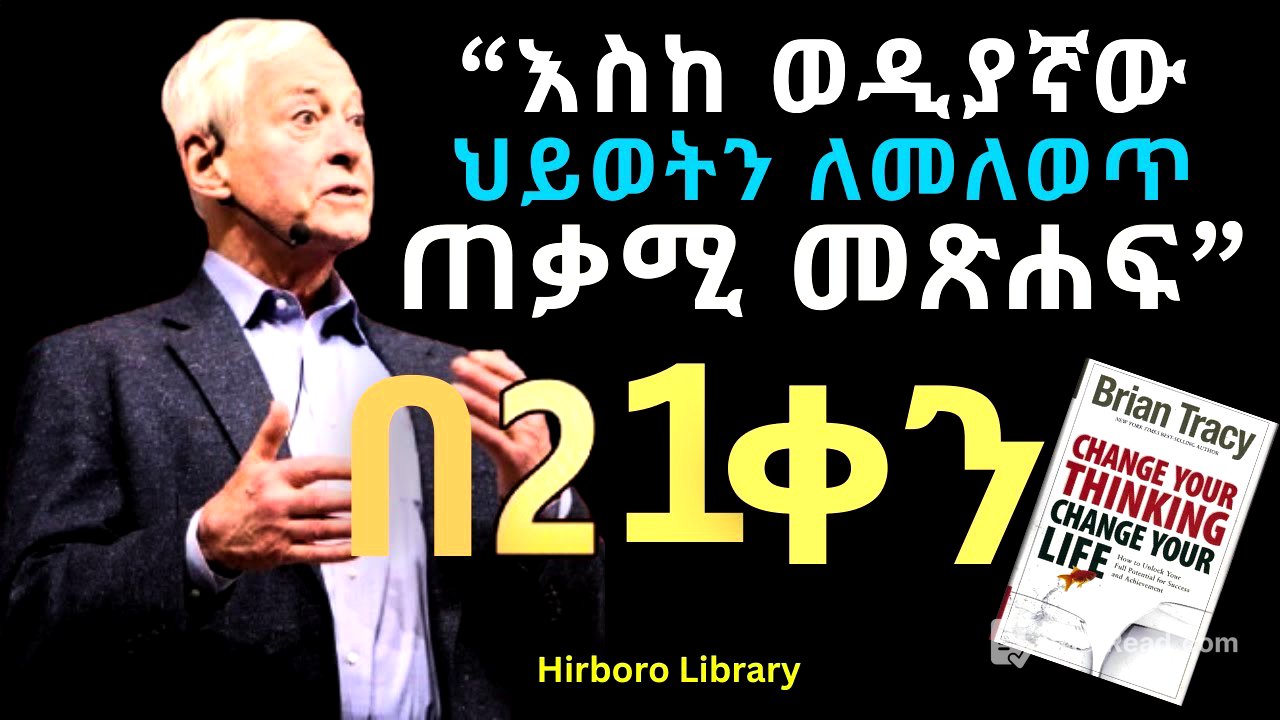TLDR;
This video explores the concept of personal transformation and the possibility of reinventing oneself, focusing on the idea of neuroplasticity and the "21-day rule." It discusses how long it takes to form new habits, emphasizing that it varies from person to person. The video provides practical keys to facilitate self-change, including having a clear vision, taking small steps, understanding environmental influence, using mental programming, and practicing patience and persistence.
- The "21-day rule" is a myth; habit formation varies individually.
- Neuroplasticity allows us to reshape our brains through thoughts and actions.
- Key steps include clear vision, small actions, environment adjustment, mental programming, and patience.
Introduction: The Possibility of Reinvention [0:00]
The video starts by prompting viewers to reflect on their current life and consider whether they are content or feel a need for change. It introduces the idea of completely rebuilding one's habits, mindset, and identity. The video aims to explore whether such transformation is possible and presents the concept of the mind's rebirth, suggesting that significant change can occur in a relatively short period, such as 21 days.
The Myth of the 21-Day Rule [1:11]
The video addresses the popular "21-day rule," which suggests that it takes 21 days to form a new habit or break an old one. This concept originated from Dr. Maxwell Maltz, a plastic surgeon who observed that patients took about 21 days to adjust to their new appearance after surgery. However, the video questions whether this rule is scientifically proven and universally applicable. It clarifies that the time it takes to form a new habit varies from person to person.
The Reality of Habit Formation: Neuroplasticity [2:12]
The video emphasizes that the time required to form a new habit differs for each individual. Citing a study, it mentions that it can take an average of 66 days to adapt to a new habit, with some people taking as little as 18 days and others up to 254 days. The video suggests viewing the 21-day period as a starting point rather than a strict rule. The main takeaway is the importance of believing in the brain's ability to change, known as neuroplasticity, which allows us to mold our minds through our thoughts, actions, and habits.
Key 1: Clear Vision and Purpose [3:42]
The first key to self-transformation is having a clear vision and understanding the "why" behind the desired change. It's essential to define specifically what you want to change and what the new version of yourself looks like. Instead of vaguely aiming to be a better person, one should detail specific goals, such as exercising daily, eating healthily, and being kind to others. Answering the question of "why" is crucial as it fuels the journey of change, providing motivation and reminding you of your purpose when facing challenges.
Key 2: Small, Achievable Steps and Progress Tracking [4:41]
The second key involves taking small, manageable steps and tracking progress. Instead of attempting significant changes all at once, it's better to start small to avoid burnout. For example, if the goal is to exercise for an hour daily, begin with just 15 minutes a day in the first week and gradually increase the duration. Celebrating small victories and keeping a record of progress helps in self-assessment and improvement.
Key 3: Understanding and Adjusting Environmental Influence [5:40]
The third key is understanding and adjusting the influence of one's environment. The environment and the people we surround ourselves with significantly impact our behavior and habits. If trying to break a bad habit, it's necessary to avoid people and places that encourage that habit. Conversely, to develop a good habit, one should spend time with people who support that habit and be in an environment that facilitates it. The video suggests that changing one's environment is crucial for changing oneself.
Key 4: Mental Programming - Affirmations and Visualization [6:24]
The fourth key involves mental programming through affirmations and visualization. The mind believes what it is told, so repeating positive statements about oneself can gradually change one's mindset. Affirmations such as "I am strong," "I am resilient," and "I can change" can be effective. Additionally, visualizing the desired outcome or the new identity in detail helps the mind accept that reality and work towards it. Visualization is a key to unlocking the mind's power.
Key 5: Patience, Persistence, and Learning from Mistakes [7:27]
The fifth key emphasizes patience, persistence, and learning from mistakes. The journey of change is not always linear; there will be ups and downs. The important thing is not the setbacks but the ability to rise after falling and learn from mistakes. Whether it takes 21 days or 66 days, patience and perseverance are essential. Each day is a new opportunity, so it's important to stay focused and not lose hope.
Conclusion: The Possibility of a Fresh Start [8:06]
In conclusion, the video suggests that while completely transforming oneself in a single day may be challenging, laying the foundation for change, clearing new mental pathways, and starting the journey toward the desired identity is possible within a shorter timeframe like 66 or 90 days. The key is to be ready to initiate the mind's rebirth. The video encourages viewers to share their experiences and methods for change in the comments and reminds them not to underestimate their mind's transformative power.
